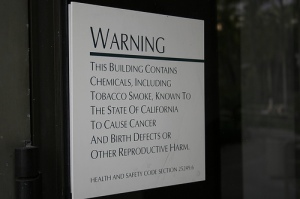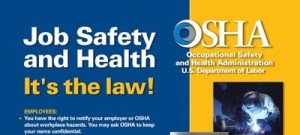The floor collapsed and dropped almost a foot, resulting in damage to the structures of both the lounge and the hotel.
 The Luxor also sought compensation as an “additional insured.†The lease between the casino and developer required the latter to name Luxor as an additional insured on all policies. No doubt the Luxor assumed (that dangerous word!) that this language covered its exposure to loss.
The Luxor also sought compensation as an “additional insured.†The lease between the casino and developer required the latter to name Luxor as an additional insured on all policies. No doubt the Luxor assumed (that dangerous word!) that this language covered its exposure to loss.
However, the developer’s insurance policy restricted the coverage of an additional insured. Luxor’s entitlement was limited to indemnification for money it paid to people injured by the developer’s acts or omissions. The casino was not entitled to compensation for its own losses…
The casino invoked the Unfair Insurance Claims Practices Statute, a law adopted by numerous state legislatures.
The Luxor Hotel & Casino Hotel contracted with a developer to construct and operate a restaurant called the Cathouse Lounge (nothing is subtle in Vegas) on the mezzanine level. The developer gutted the space, made structural modifications and installed new fixtures and equipment.
One night during Cathouse’s third month in operation, while a large crowd was enjoying good food and fun ambiance, a portion of the structure began to buckle. The floor collapsed and dropped almost a foot, resulting in damage to the structures of both the lounge and the hotel. The lounge was evacuated immediately. Thereafter the county Department of Building Services ordered Luxor to close both the Cathouse and damaged portions of the hotel pending repairs. Luxor hired an expert to determine the cause of the floor’s failure. Turns out the renovations were insufficient to support the sizeable number of people the lounge attracted.
Both Luxor and the developer paid to repair the structural deficiencies and for damage to their respective property. The Cathouse reopened in three weeks and submitted a claim to its insurance company. The Luxor also sought compensation as an “additional insured.†The lease between the casino and developer required the latter to name Luxor as an additional insured on all policies. No doubt the Luxor assumed (that dangerous word!) that this language covered its exposure to loss.
However, the developer’s insurance policy restricted the coverage of an additional insured. Luxor’s entitlement was limited to indemnification for money it paid to people injured by the developer’s acts or omissions. The casino was not entitled to compensation for its own losses. Yikes!
This is a very significant limitation. Luxor was seeking compensation for costs of repairing structural damage to its own facility, replacing its own destroyed property and interruption of its business. The insurance company denied the claim based on the indemnification-only coverage, and the court upheld the denial. This was not the plan Luxor had in mind when it included the requirement that the casino be listed as an additional insured in the developer’s lease.
But lawyers are clever folks and Luxor was well-represented. The casino invoked the Unfair Insurance Claims Practices Statute, a law adopted by numerous state legislatures. This act requires, among other consumer protection provisions, that insurance companies respond to claim letters within 30 days of receipt. The insurance company in the Luxor case waited months before acknowledging the hotel’s claim. The penalty for violation is mandatory payment of the claim. This is true even though the policy does not otherwise cover the claim. So the court awarded Luxor the money it sought. Sometimes the back door can be a great alternative.
For more:Â Â http://www.hotelworldnetwork.com/legal/read-your-insurance-contract-closely-then-read-it-again
 Inquirer says.
Inquirer says.









